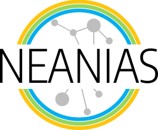We are proud to announce that Eleni Petra, Project Manager and Georgios Kakaletris, Technical Manager of NEANIAS project, became recently members of the EOSC Training and Skills Working Group and the Architecture Working Group respectively.
Within the framework of WP3, the NEANIAS objectives are to develop and integrate at EOSC three innovative cross-cutting services for tackling operationally atmospheric-related studies and engineering tasks towards engaging several user communities linked to the atmosphere including: meteorologists, industrial air pollutant emitters, ecologists, rural urban planners and air quality authorities, geohazards, civil protection, insurance, health agencies. A variety of sensors deployed in satellites, aerial (manned or unmanned) and terrestrial platforms are currently operationally employed to monitor the atmosphere.
In the last decade, millimetric radioastronomy has been the spearhead of multiple breakthrough discoveries that have improved significantly our knowledge of the Universe, with instruments such as ALMA comparable to the best optical and infrared telescopes in terms of sensitivity and angular resolution. But we are on the edge of a new revolution. The Square-Kilometre Array (SKA), an international collaborative project involving more than 100 scientific and technological partners from 20 countries, will become the largest radio interferometer ever built.
Post-graduate fellowship for” Development of data analysis and Machine Learning services for Astrophysics” funded by the NEANIAS project, at the INAF – Osservatorio Astrofisico di Catania.
Work package 5 has been created to have a sort of bridge between the novel new services developed through the frame of NEANIAS and European end-users. By novel services, we refer to the state-of-the-art technologies in space, atmosphere and underwater. As end-users, the highlight has been on small and medium-sized businesses.
In the framework of WP2, the objective of NEANIAS is to develop and integrate at EOSC three innovative cross-cutting services (TRL 8) for tackling operationally underwater-related studies and engineering tasks towards engaging several user communities including: archaeologists, geologists, oil & gas/ engineers, renewable energy planners, marine robotics, civil engineers, computer vision/ machine learning software engineers and insurance.
The Space Services delivered within NEANIAS WP4 aim at tackling the needs of the Astrophysics and Planetary Science communities in the forthcoming decades. These needs, which arise directly from the expected data deluge caused by new-generation instruments and all-sky surveys, can be mapped into three specific goals:
The Inter-University Institute for Data Intensive and the Astronomy Department at the University of Cape Town (UCT) has hosted Dr Ugo Becciani from the Catania Astrophysical Observatory, Italian Institute of Astrophysics (INAF) in Catania (Sicily), on 25/02/2020.
NEANIAS aims at contributing to the materialization of the European Open Science Cloud (EOSC) by delivering innovative thematic services in the Underwater, Atmospheric and Space research sectors.
Field studies and data collection are vital for mapping and understanding the active geological processes on Earth, particularly for those that induced superficial deformations like earthquakes and shallow magmatic processes (e.g. Bonali et al., 2012; Tibaldi et al., 2017).

